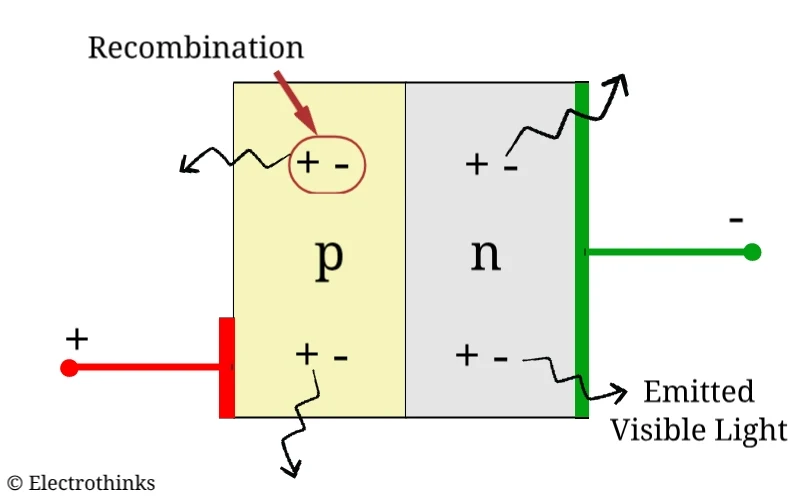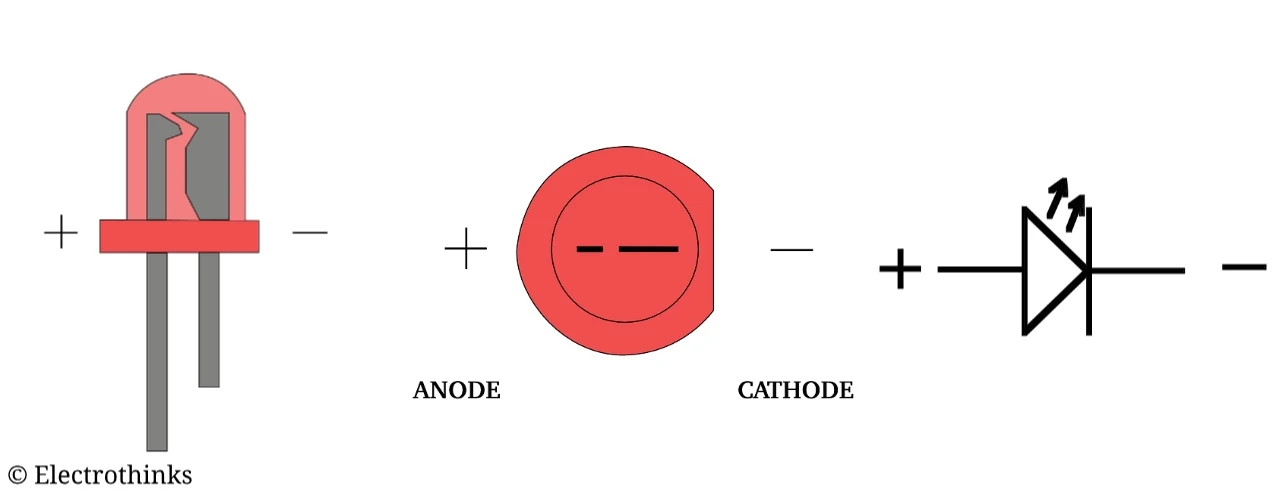LED is one of the latest inventions and is extensively used these days. Their popularity and applications are increasing rapidly due to very small in size and consume very little power. But the question arises, do you know how does a LED works, voltage-current calculation, applications, and advantages of an LED? Let's learn about LED with working principle.
Definition: A LED is a diode that gives off visible light when the diode is forward biased.
A Light-emitting diode (LED) is a diode, but it is not made from silicon or germanium. It is made by using elements like gallium, phosphorus, and arsenic. By varying the quantities of these elements, LEDs can produce light of different wavelength with different colours that include red, green, yellow, and blue.
For example, when a LED is manufactured using gallium arsenide, it will produce a red colour light. If the LED is made with gallium phosphide, it will produce a green colour light.
Working principle of LED
The working principle of light-emitting diode (LED) is when it is forward biased, the electrons from the n-type material cross the PN junction and recombine with holes in the p-type material. Basically, these free electrons are in the conduction band and at a higher energy level than the hole in the valance band. When this recombination takes place, the recombining electrons release energy in the form of heat and light.
In germanium and silicon diodes, almost the entire energy is given up in the form of heat and emitted light is negligible. However, in gallium arsenide, the number of photons of light energy is sufficient to produce quite intense visible light.
Schematic symbol of LED
The schematic symbol for a LED is shown below. The arrows are shown as pointing away from the diode and indicating that light is being emitted by the device when it forward biased.
LEDs are available in several colours, but the schematic symbol is universal for all. So, there is no symbol to indicate the colour of a particular LED.










This comment has been removed by a blog administrator.
ReplyDeleteHochzeitsfotograf Garmisch-Partenkirchen, für authentische & echte Hochzeitsfotos ohne gestellte Posen, lieber vor den Bergen. Ab 350,- € Hochzeitsfotograf Garmisch Partenkirchen
ReplyDeleteExcellent details! We’re thrilled to offer tailored and inventive on-demand delivery apps that are not only engaging but also user-centric. If you’re looking to create a seamless, efficient, and highly functional pickup and delivery software, look no further. Our expertise lies in crafting customized solutions that enhance user experience and simplify the delivery process. For more details and to explore how we can bring your vision to life, check out our website!"
ReplyDeleteFeel free to adjust as needed! Let me know if you'd like more help with this.
Louez votre voiture de luxe à Tanger à des prix avantageux. Profitez dès aujourd'hui de notre remise spéciale de 20% sur toutes nos voitures de luxe. Appelez- ... location voiture luxe Tanger
ReplyDeleteLocation voiture Casablanca à l'aéroport prix pas chère . Profitez de tarifs avantageux et d'une assistance fiable pour vos déplacements. Location voiture Casablanca
ReplyDelete